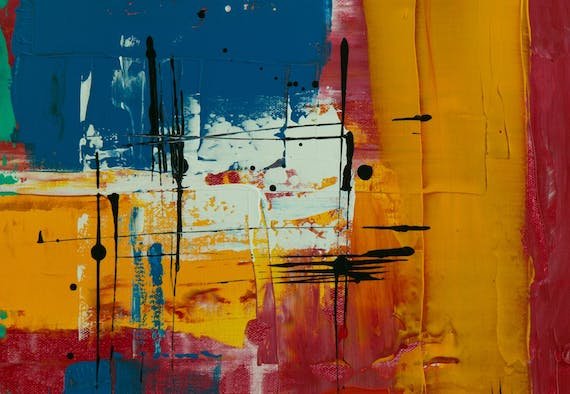Graphic Design

Color Psychology in Graphic Design: Unlocking the Power of Hues
Color is a fundamental element of design that can evoke emotions, convey messages, and influence perceptions. As a designer, understanding color psychology is crucial to creating impactful designs that resonate with your audience. In this blog post, we'll delve into the principles of color psychology and explore how different colors can be used strategically in graphic design.
The Science of Color Psychology
Color psychology is the study of how colors affect human behavior and emotions. Different colors can trigger various psychological responses based on cultural associations, personal experiences, and biological reactions. By leveraging these insights, designers can craft visuals that communicate the desired message and elicit specific responses from viewers.
The Emotional Spectrum of Colors
Let's explore the emotional and psychological effects of some common colors and how they can be applied in graphic design:
1. Red: Passion and Urgency
Red is a powerful color that evokes strong emotions. It is often associated with passion, excitement, and urgency. In design, red can be used to:
- Draw attention to important elements, such as call-to-action buttons or sale announcements.
- Convey a sense of urgency or importance.
- Evoke feelings of love and passion in romantic or emotional contexts.
2. Blue: Trust and Calm
Blue is a calming color that instills a sense of trust and reliability. It is commonly used in corporate and healthcare settings to:
- Create a sense of trust and professionalism.
- Promote calmness and relaxation.
- Convey a sense of stability and reliability.
3. Yellow: Happiness and Warmth
Yellow is a cheerful and vibrant color associated with happiness and warmth. It can be effectively used to:
- Grab attention and create a sense of optimism.
- Evoke feelings of joy and positivity.
- Highlight important information or create a sense of urgency.
4. Green: Growth and Harmony
Green is a versatile color that symbolizes growth, harmony, and nature. It is often used in designs related to:
- Environmental and sustainability themes.
- Health and wellness.
- Creating a sense of balance and tranquility.
5. Orange: Energy and Enthusiasm
Orange combines the energy of red and the happiness of yellow. It is a dynamic color that can be used to:
- Convey enthusiasm and creativity.
- Draw attention and create a sense of urgency without the intensity of red.
- Promote a sense of friendliness and approachability.
6. Purple: Luxury and Creativity
Purple is often associated with luxury, creativity, and spirituality. In design, it can be used to:
- Evoke a sense of luxury and sophistication.
- Inspire creativity and imagination.
- Create a sense of mystery and intrigue.
7. Black: Elegance and Power
Black is a bold color that conveys elegance, power, and sophistication. It is frequently used to:
- Create a sense of luxury and exclusivity.
- Add a timeless and classic appeal.
- Enhance contrast and readability when paired with lighter colors.
8. White: Purity and Simplicity
White represents purity, simplicity, and cleanliness. It is often used in minimalistic designs to:
- Convey a sense of simplicity and clarity.
- Create a clean and modern look.
- Enhance readability and focus on key elements.
Applying Color Psychology in Graphic Design
To effectively use color psychology in your designs, consider the following tips:
-
Understand Your Audience
Different colors can have different meanings and effects on various audiences. Consider cultural associations and preferences when selecting colors for your design. -
Define Your Brand Personality
Align your color choices with your brand's personality and values. For example, a tech company might use blue to convey trust and professionalism, while a children's toy brand might use bright colors to evoke fun and playfulness. -
Use Color to Guide Attention
Strategically use colors to guide viewers' attention to important elements, such as call-to-action buttons, headlines, or key messages. -
Maintain Color Harmony
Ensure that your color palette is harmonious and visually appealing. Use tools like color wheels and palette generators to create balanced and cohesive color schemes. -
Test and Iterate
Test your color choices with your target audience to gauge their reactions and preferences. Be open to feedback and make adjustments as needed.
Conclusion
Color psychology is a powerful tool in graphic design that can significantly impact how your designs are perceived and experienced. By understanding the emotional and psychological effects of colors, you can create visually compelling designs that effectively communicate your message and resonate with your audience. Embrace the power of color and let it enhance your creative process!